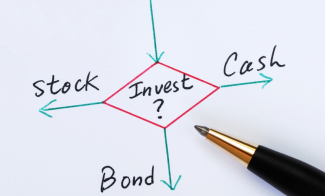
Resolving the “I Just Want To Go To Cash Conundrum.”
Recently, I was speaking with someone who had just sold his business and had decided to retire. He told me he was also thinking of selling all of the stocks he owned, so he and his wife could live off the combined proceeds for the rest of their lives. He was wondering whether his plan would work after factoring in the taxes involved.
“I just want to go to cash,” he said. He isn’t alone in that sentiment. We hear it regularly from business owners who are nearing retirement. They want to go to cash and/or buy real estate, because these are familiar assets that they can touch and feel. “Going to cash” is easy to understand.
Then again, he was indirectly asking me what I thought by floating the idea past me. There is certainly nothing wrong with wanting to move a portion of your wealth into cash or cash equivalents. Depending on the circumstances, we routinely help families do just that, so they know the money will be there for them, come what may. But, as with most things in life, there are important tradeoffs. You want to make such moves with your eyes wide open to the advantages and disadvantages of going to cash.
The Lure of Going to Cash To help this particular business owner think through his options, I began by assuring him that he was wise to be wary about participating in the stock market. There is plenty of academic and circumstantial evidence that most investors approach the stock market more like gamblers or speculators instead of prudent participants. They seek to utilize predictions and forecasts instead of patiently “being there” to capture expected long-term returns.
It’s no wonder that this is the typical approach to investing. After all, few individual investors are ever formally taught how to invest. Instead, they buy what sounds good at the time, based on hot tips from random sources. I call this the “shopping cart” approach to investing. Every time you see or hear something that looks or sounds good, you click, “ADD TO CART,” and the next thing you know, it’s one of your investments.
When Cash Isn’t Quite King So I asked this business owner, “What if you could design your perfect investment? What would it look like?”
He thought for a moment and then listed the following: “It would have to be diversified all around the world, so I wouldn’t have all my eggs in one basket. It would be easy to manage so I wouldn’t have to spend a lot of time on it. The right trades would occur mostly automatically, so I wouldn’t have to do something every time a crisis or unexpected event happens in the world. It wouldn’t expose me to too much risk, too many taxes or excessive costs. It would be easy enough to reconfigure if my circumstances changed. Oh, and if I needed to get to some money quickly or draw an income stream from it, I should be able to do so without too much hassle.” “That’s quite a bit,” I said. “Is there anything else?”
He thought some more and said, “Yes, there is. I’d like for it to at least keep up with inflation, if not beat it … while still being safe.”
Defining “Safe” Investing This was an important milestone in our conversation. “Help me understand what ‘safe’ means to you,” I said. “Well, I don’t want to lose any of the money I’ve already got.” “I see,” I replied. “Then I guess going to cash is right for you. “It won’t do any of the other things you told me would represent your perfect investment. But it is true that you are highly unlikely to lose any of the money you’ve already got, so I guess we’re finished here.”
Of course we weren’t finished. Even for this businessman and his wife, preserving what he’d accumulated turned out to be only one small component of what really represented his desired investment experience. In other words, “safe investing” also includes considering all that is important to you about your wealth: How much income do you need, what expenses are you planning for, when will you need to access your money, how often do you want to access it, and how much (if any) do you hope to leave for your children and grandchildren?
In other words, safe investing usually requires far more than cash alone can hope to address. It means considering the balance between preserving what you’ve got while continuing to invest as needed to cover all that you will want during the rest of your well-lived life.
Managing Your Money for the Long Haul After some 40 years of working with individuals and families, I have come to believe that investors often experience a disconnect between their questions and their real concerns. When asking about the “safe” or “best” investments, what they seem to be seeking at a deeper level is a connection between how they invest their resources and their most important goals. Do I have enough? How much risk do I need to take to live the life I want for my family and myself? Many successful people and families are used to assessing risks and weighing tradeoffs in their professional lives. But if they are unfamiliar with the 60-plus years of scholarly research guiding evidence-based investing, they are left to depend on the promotional sound bites that reduce investing to what feels like a game of chance. What a shame, because it doesn’t have to be that way.
Instead, here is a five-step roadmap to righting your course and finding an investment plan that drives the life you want to live.
1. Find an advisor who is a fiduciary. If your advisor is not willing to establish a fiduciary relationship with you and your family, then find one who will. All “fiduciary” means is that your advisor legally pledges to act only in your best interest. If he or she cannot do that (brokers are not legally able to make such promises), then conflicting incentives might be influencing the advice. Move on. 2. Make sure the advisor fee you are paying includes comprehensive planning and wealth management services. Often we find families paying 1 percent or more to stand-alone money managers. When you can secure an advisor who engages your family in fully coordinated wealth and/or retirement planning for similar rates, why would you pay more for less? Move on. 3. Make sure your advisor puts personalized planning ahead of product promotion. Many trading professionals pose as your trusted advisor but are actually well-trained sales people, with underlying incentives undisclosed to you. Here’s one way to tell who is whom: Is he or she advising you according to a clear, personalized plan you have crafted together, directly tied to your goals and capturing your risk/return tradeoffs? Or is your advisor merely enabling your same, old unreliable and unsatisfying “shopping cart” approach to selecting random holdings? 4. Be sure your advisor documents your investment plan in a written Investment Policy Statement. To ensure that you and your advisor rely on your plan as a touchstone to guide you both through thick and thin, it should be in writing, and signed by both of you. Revisions should be documented and signed as well. 5. Invest according to reason instead of reaction. Avoid speculative investing based on chasing hot or cold stocks, or reacting to short-term market movements. Instead, use an evidence-based strategy that focuses on the factors you can expect to control: patiently capturing long-term market returns, managing the risks involved and minimizing the costs. We believe our five-step roadmap offers an effective model to guide your objective financial decisions. Augment it with probability planning (the odds of having enough money given your assets, earning, spending and goals). Factor in inflation too, and you’re well on your April 29, 2015 Page 5 way to objectively evaluating when – or if – it’s time to “go to cash.” You may still decide to do so, but it is better to know the expected consequences of that decision ahead of time. When it comes to managing your life’s savings, ignorance is not bliss. An Invitation to Learn More Over the years, we’ve focused on helping families balance their goals for keeping what they’ve got safe while safeguarding their future, and have helped them manage their investments accordingly. If you would like to explore what achieving investment balance might look like for you and your family, I invite you to join us for a one-hour, no-cost and no-obligation session to ask us the questions with which you’ve been struggling and to find out more about our approach. There is no time like the present to get the answers you need to determine what you should be doing with your investing for the rest of your life.

